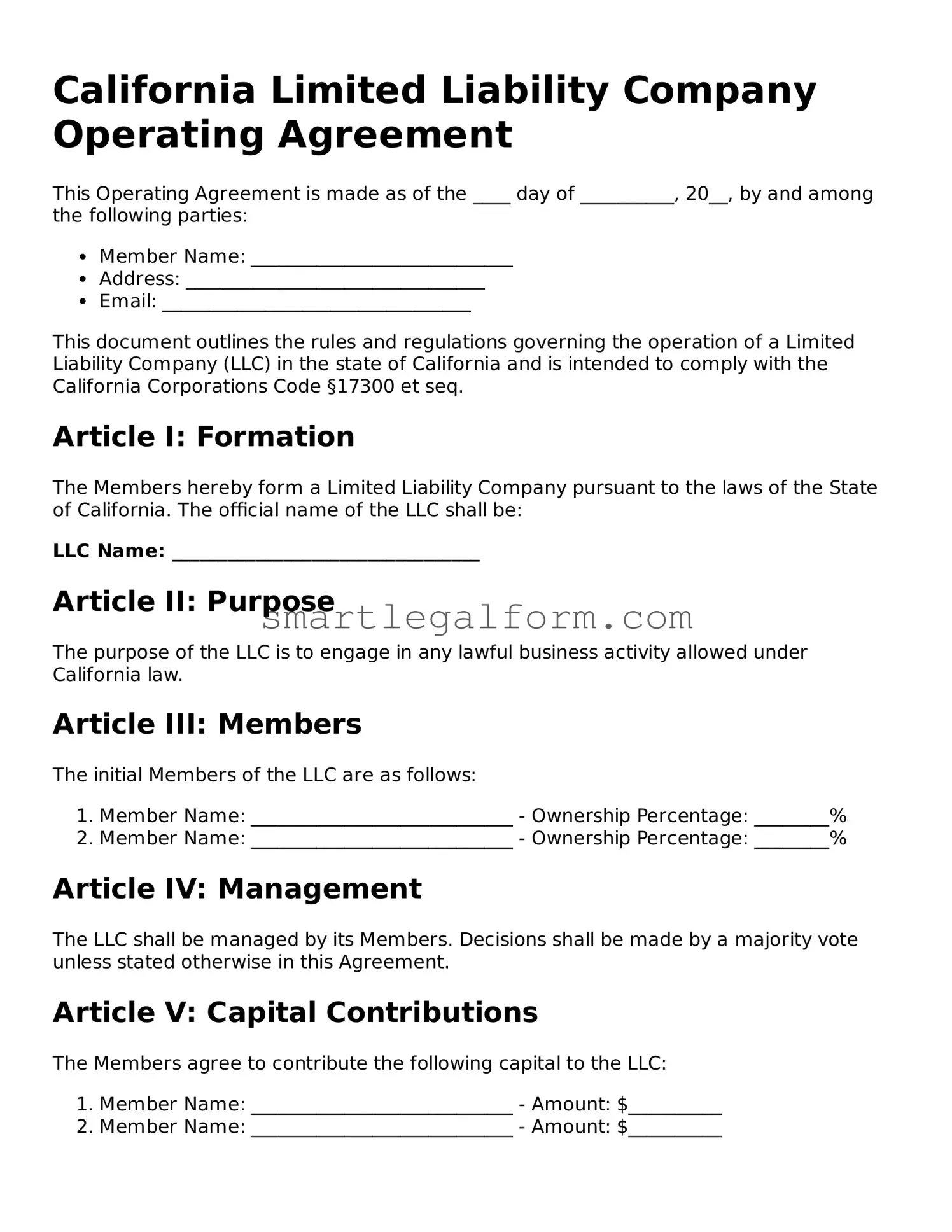California Limited Liability Company Operating Agreement
This Operating Agreement is made as of the ____ day of __________, 20__, by and among the following parties:
- Member Name: ____________________________
- Address: ________________________________
- Email: _________________________________
This document outlines the rules and regulations governing the operation of a Limited Liability Company (LLC) in the state of California and is intended to comply with the California Corporations Code §17300 et seq.
Article I: Formation
The Members hereby form a Limited Liability Company pursuant to the laws of the State of California. The official name of the LLC shall be:
LLC Name: _________________________________
Article II: Purpose
The purpose of the LLC is to engage in any lawful business activity allowed under California law.
Article III: Members
The initial Members of the LLC are as follows:
- Member Name: ____________________________ - Ownership Percentage: ________%
- Member Name: ____________________________ - Ownership Percentage: ________%
Article IV: Management
The LLC shall be managed by its Members. Decisions shall be made by a majority vote unless stated otherwise in this Agreement.
Article V: Capital Contributions
The Members agree to contribute the following capital to the LLC:
- Member Name: ____________________________ - Amount: $__________
- Member Name: ____________________________ - Amount: $__________
Article VI: Distributions
Distributions of profits and losses shall occur according to the Members' ownership percentages as outlined in Article III.
Article VII: Meetings
Regular meetings of the Members shall be held at least once a year. Additional meetings may be called by any Member upon providing a written notice of at least ____ days.
Article VIII: Indemnification
The LLC shall indemnify the Members to the fullest extent permitted by California law for any actions taken in good faith on behalf of the LLC.
Article IX: Amendments
This Agreement may be amended only by a written agreement signed by all Members.
Article X: Governing Law
This Operating Agreement shall be governed by and construed in accordance with the laws of the State of California.
IN WITNESS WHEREOF, the parties hereto have executed this Operating Agreement as of the date first above written.
____________________________________
Member Signature
____________________________________
Member Signature
